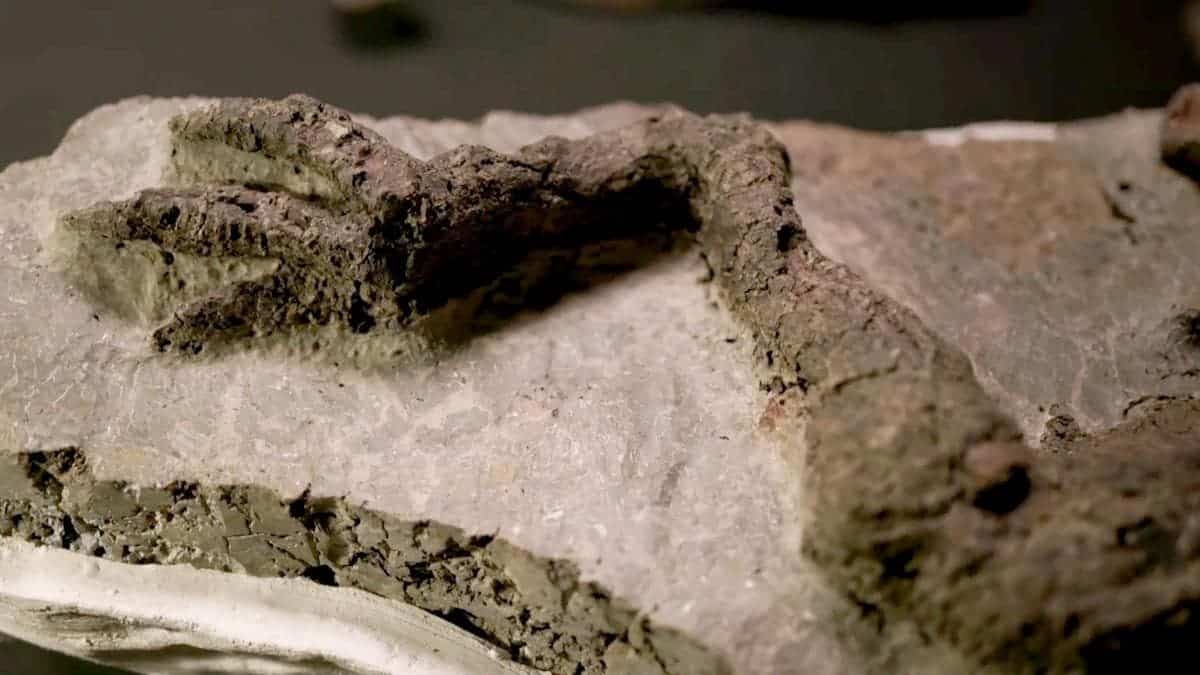Over 66 million years ago, the dinosaurs’ reign came to a dramatic close.
While it may seem unlikely, one incredible location may capture the event in the fossil record.
The Tanis fossil site of the Hell Creek Formation in North Dakota, USA, is controversial for paleontologists. First announced in 2019, researchers working at Tanis – headed by Robert DePalma – believe it preserved the exact moment a massive asteroid struck Earth, bringing on the K-Pg mass extinction. Amongst their evidence is tiny debris (known as spherules) lodged within the gills of fossilized fish and embedded within amber, thought to have been produced by the asteroid impact[i]. Additionally, the presence of an iridium layer in Tanis – a mineral often used to identify the border of the K-Pg extinction – supports the notion that it preserves the fallout of the impact[ii].
There are reasons to doubt the accuracy of this claim, however. The odds that the site preserves the exact moment of the cataclysm are considerably low; much of the site remains undescribed in scientific literature, and there are reasons to question DePalma and his research. Some of these concerns may be addressed in future research, making it crucial to keep an open mind regarding Tanis.

Regardless of this controversy, the fossils of Tanis are incredible. Sturgeon and Paddlefish fossils are so exquisite that you might think they are recently deceased. A pterosaur egg and embryo, possibly belonging to an Azhdarchid like Quetzalcoatlus, provides a rare glimpse at the earliest stages of pterosaur life. Reports exist of a turtle shell pierced by a tree branch, hinting that a cataclysmic event may have occurred at Tanis.
Then, there are the dinosaurs. While reports of Triceratops skin and dinosaurian feathers have surfaced, no fossil compares to that of a mummified dinosaur leg. Announced in 2022, the appendage – which paleontologists believe belongs to the 4-meter-long herbivore Thescelosaurus – is a unique fossil. There are no traces of scavenging and decay, leaving the Thescelosaurus leg in a state that has changed little since its death 66 million years ago:

Soft tissue preservation is extremely rare, making the presence of muscle and skin tissues incredible. Unfortunately, most of the scales appear to have fallen off (or possibly charred off), though a few precious clusters remain. No papers about the mummy have been published, meaning whatever information it holds remains a mystery to paleontologists. A crispy dinosaur leg is still quite the sight to behold!
One pressing question remains: where is the body? DePalma and the Tanis research team believe that mass water surges brought on by the asteroid impact severed the leg from the rest of the body. While this dramatized interpretation may have been the case, other possibilities exist. Scavengers could have devoured the rest of the animal, or the leg could have been buried while the remaining portions remained above ground and thus accessible to decay. If the leg became severed in a catastrophic event, you would think there would be some obvious sign of it!
The Thescelosaurus mummy is just the tip of the iceberg for Tanis. Excavations and research at the site are ongoing, meaning that incredible fossils could be just a chisel pick away from being uncovered. While the circumstances that led to the preservation of the Tanis fossils are debatable, their brilliance is unquestionable.
Where else could you find a dinosaur leg that resembles a barbequed chicken?
Thank you for reading this article! If you’d like to read more about mummified dinosaurs, I suggest reading “A Beginner’s Guide to Mummified Fossils” at Max’s Blogosaurus!
I do not take credit for any images found in this article. Header image courtesy of BBC one, found here
Works Cited:
[i] Gamillo, Elizabeth. “Paleontologists Find Fossilized Remains of a Dinosaur Possibly Killed in Earth’s Fifth Mass Extinction Event.” Smithsonian.Com, 13 Apr. 2022, http://www.smithsonianmag.com/smart-news/paleontologists-find-fossilized-remains-of-a-dinosaur-killed-in-the-mass-extinction-180979912/.
[ii] Black, Riley. “Fossil Site May Capture the Dinosaur-Killing Impact, but It’s Only the Beginning of the Story.” Smithsonian.Com, 3 Apr. 2019, http://www.smithsonianmag.com/science-nature/fossil-site-captures-dinosaur-killing-impact-its-only-beginning-story-180971868/.
DePalma, Robert A., et al. “A Seismically Induced Onshore Surge Deposit at the KPG Boundary, North Dakota.” Proceedings of the National Academy of Sciences, vol. 116, no. 17, 2019, pp. 8190–8199, https://doi.org/10.1073/pnas.1817407116.

One reply on “Fossil Friday: A Mummified Thescelosaurus & the Day the Dinosaurs Died”
[…] Thank you for reading today’s article! Though the most famous, Button and Zanno’s study has not been the discovery related to Thescelosaurus in recent years, as one fossil from the infamous Tanis Fossil Site of North Dakota may preserve a mummified Thescelosaurus leg! If you want to know more, read about it here at Max’s Blogosaurus! […]
LikeLike